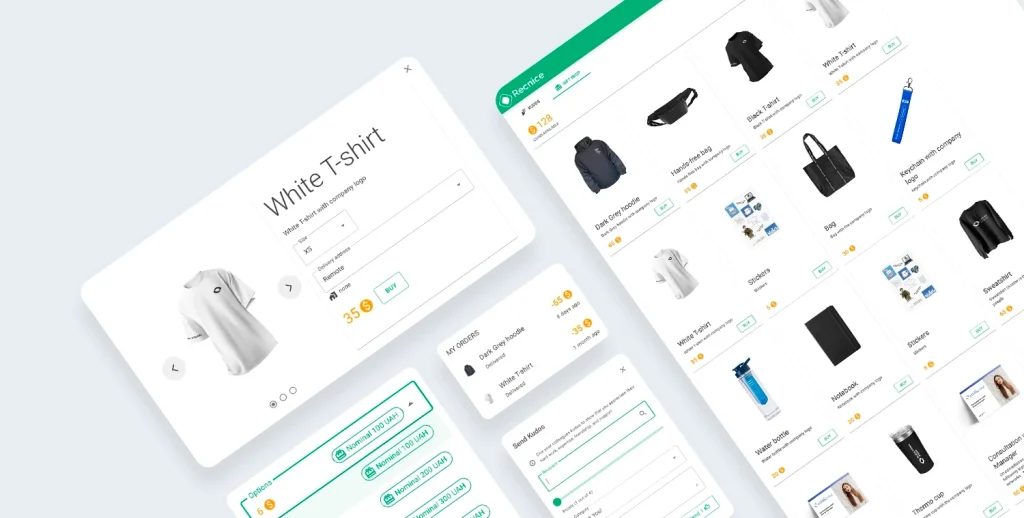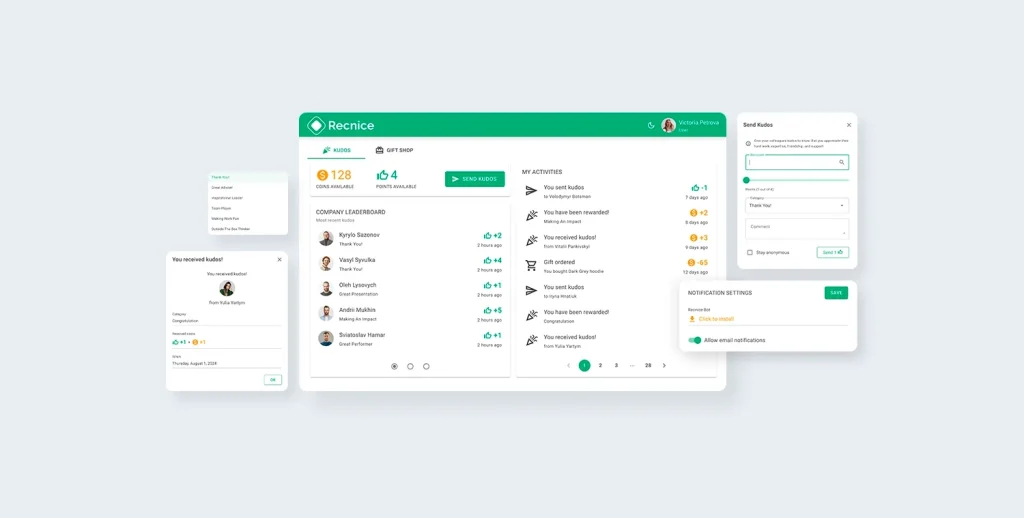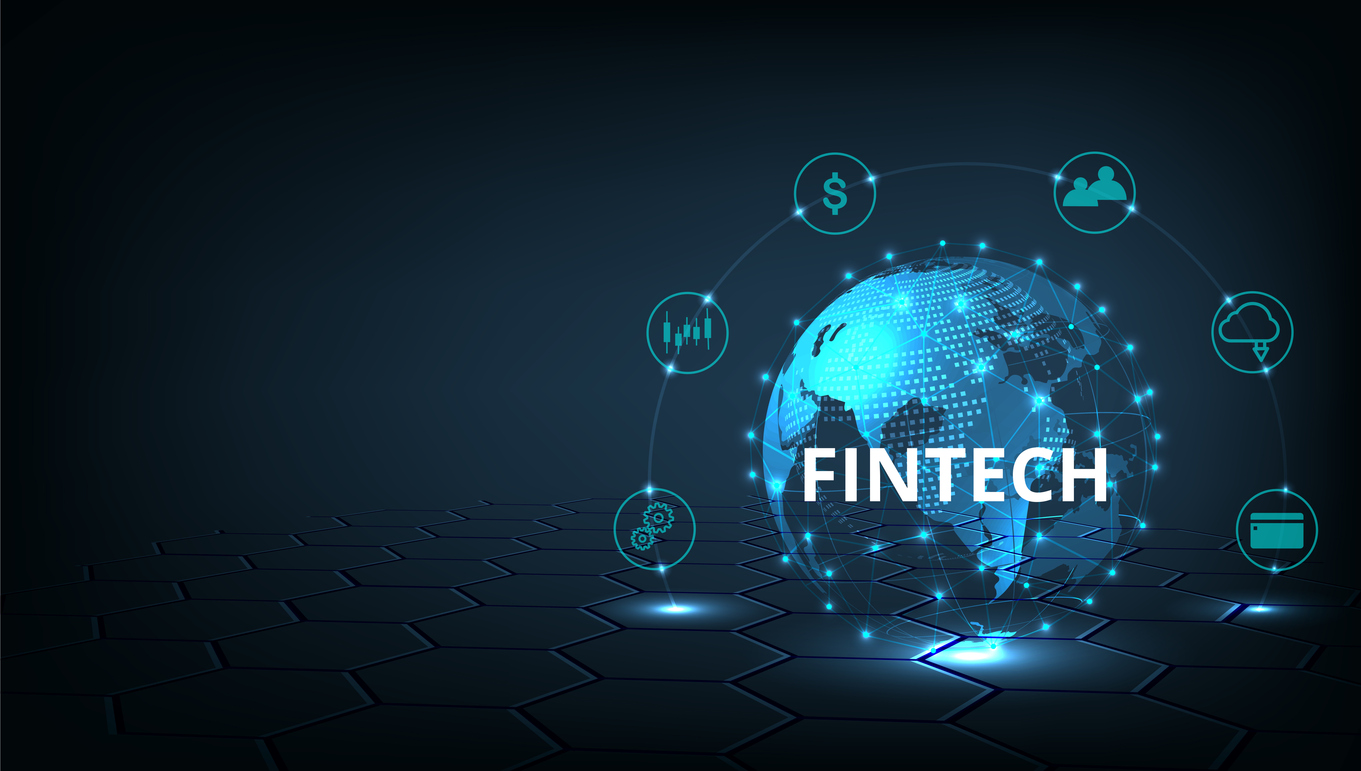We use cookies to ensure we give you the best experience on our website. By clicking Agree you accept our Privacy and Cookies Policy.
Employee recognition program: How to choose, launch, and use properly

 14 minutes read
14 minutes read
Content
Employee recognition programs are not just a “nice-to-have” initiative—they are vital for nurturing a motivated, engaged, and productive workforce. At Blackthorn Vision, we’ve seen firsthand how structured recognition can align employee behaviour with business objectives, reduce turnover, and foster a culture of continuous improvement.
With this guide, we will help you develop a comprehensive and impactful employee recognition program that celebrates achievements and drives sustainable business success.
What is an employee recognition program?
An employee recognition program is a formal system designed to acknowledge and reward employees for their contributions, achievements, and dedication to the company. Recognition can come in many forms, including monetary rewards, gifts, public acknowledgement, and career development opportunities. The primary goal is to make employees feel valued, increasing their job satisfaction, loyalty, and overall engagement with the company.
The importance of such programs cannot be overstated. Let’s look at some statistics. According to the Gallup/Workhuman survey, organizations that prioritize employee appreciation have workers who are 56% less likely to look for a new job. Another Gallup research states that employees who strongly agree that their manager holds them accountable for their performance are 2.5 times more likely to be engaged in their jobs. Finally, according to the study by Gartner, a well-designed recognition program can help drive an 11.1% increase in average employee performance.
It’s obvious that recognition has a direct impact on morale, productivity, and retention, making it a critical component of any successful HR strategy. We will look at some key functionality and benefits of employee recognition programs, using the example of Recnice, delivered by Blackthorn Vision. It offers a flexible, customizable platform that allows you to create recognition categories, set up automated workflows, and track the effectiveness of your program—all from a single, user-friendly interface.
Gift-giving and employee satisfaction
Gifts are one of the most effective forms of employee recognition. They provide a tangible, lasting reminder of an employee’s achievements. Unlike verbal praise, which can be forgotten over time, a well-chosen gift is a constant reminder of the company’s appreciation. This not only makes the employee feel valued but also encourages them to continue excelling in their role.
Psychological studies support the effectiveness of gifts as a form of recognition. Receiving a gift triggers the release of dopamine, a neurotransmitter associated with pleasure and reward, which enhances the positive association with the company. Furthermore, 80% of employees state that receiving a gift from their employer makes them feel more connected and loyal to the company.
Recnice offers a variety of gift options that can be tailored to individual preferences, ranging from physical items to unique experiences. Whether it’s a personalized product, a premium subscription, or a team-building activity, Recnice ensures that each gift is meaningful and aligned with the values of both the company and the recipient.

Launching the new employee recognition program
Introducing a new employee recognition program is an opportunity to set the tone for a culture of appreciation and continuous improvement. The first step is to clearly define the program’s objectives. Are you looking to boost morale, increase productivity, reduce turnover, or all of the above? Once you’ve identified your goals, you can design a program that aligns with them.
Communication is key to a successful launch. Employees need to understand the program’s purpose, how they can participate, and what types of recognition are available. Consider holding a company-wide meeting or sending detailed communications to ensure everyone is informed and excited about the new initiative.
With Recnice, introducing a new recognition program is seamless. The platform’s easy-to-use setup tools allow you to quickly define the recognition criteria, set up automated notifications, and manage reward distribution. Additionally, Recnice offers templates and communication materials to help you effectively announce the program across various channels, ensuring that no one is left out of the loop.
Performance measuring and tracking
A successful employee recognition program must be data-driven and continuously optimized to meet the evolving needs of the organization and its employees. Measuring the program’s performance is essential to understanding its impact and making the necessary adjustments to improve its effectiveness.
Regular analysis and feedback loops enable you to make data-driven decisions that enhance the program’s impact, ensuring it continues to motivate employees and contribute to the company’s success. Here are key aspects to consider when tracking the performance of your recognition program:
Key metrics to track:
- Employee satisfaction scores: Regularly assess how employees feel about their recognition by incorporating questions into your employee satisfaction surveys. High satisfaction scores can indicate that your recognition efforts are hitting the mark, while lower scores may signal a need for improvement.
- Turnover rates: A decrease in turnover rates after implementing a recognition program is a strong indicator that employees feel valued and are less likely to leave the company. Conversely, if turnover remains high, it may suggest that your recognition efforts need to be more impactful or better aligned with employee expectations.
- Productivity levels: Track productivity metrics before and after implementing recognition initiatives to gauge their effectiveness. Recognition programs that successfully motivate employees should correlate with improved productivity, as employees who feel appreciated are more likely to go the extra mile.
- Frequency of recognition activities: Monitor how often and by whom employees are recognized. A high frequency of recognition suggests a thriving culture of appreciation, while infrequent recognition might indicate that the program is not being fully utilized or needs further promotion.
Regular feedback and continuous improvement:
- Employee surveys: Conduct regular surveys to gather feedback on how the recognition program is perceived. Questions should focus on the fairness, timeliness, and relevance of the recognition. This feedback is invaluable for identifying areas that need adjustment, such as ensuring that recognition is evenly distributed across departments and roles.
- Focus groups: Organize focus groups to explore the qualitative aspects of your recognition program in depth. These discussions can uncover specific issues that may not be evident from survey data alone, such as a perceived lack of transparency in the recognition process or the need for more diverse reward options.
Analyzing and acting on data:
- Participation rates: Use tools like Recnice to monitor how many employees actively participate in the recognition program. Low participation rates could indicate that the program is not well-publicized or that employees do not find it valuable. This data helps identify gaps and informs strategies to increase engagement, such as launching awareness campaigns or simplifying the recognition process.
- Popular rewards: Track which rewards are most frequently chosen by employees. This information helps ensure that your reward offerings are aligned with employee preferences and can guide decisions on introducing new rewards or phasing out less popular ones.
- Overall employee engagement: A well-engaged workforce indicates that your recognition program fosters the desired outcomes. Recnice’s robust analytics allow you to assess overall employee engagement by correlating recognition activities with broader engagement metrics, such as absenteeism rates, customer satisfaction, and peer feedback.
Finding the right recognition solution
Selecting the right platform to manage your employee recognition program is a critical decision that can significantly influence the program’s success. The ideal solution should not only meet your current needs but also grow with your company, adapting to changes in workforce dynamics and business goals. Here are key factors to consider when choosing a recognition platform:
Scalability:
Your recognition platform should be capable of scaling with your organization. As your company expands, whether in headcount, geographical reach, or operational complexity, the platform must accommodate increased demands without sacrificing performance or user experience. For example, if you plan to expand globally, the platform should support multi-language and multi-currency options to cater to diverse teams.
Customization:
Every organization has unique values, goals, and culture. Therefore, your recognition platform should offer robust customization options that allow you to tailor the program to your specific needs. This includes the ability to create custom recognition categories, set criteria that align with your company’s strategic objectives, and personalize the reward offerings. A customizable platform ensures that your recognition efforts are meaningful and resonate with your employees, fostering a deeper connection between them and the company.
Integration with existing HR systems:
Seamless integration with your existing HR systems is crucial for the smooth operation of your recognition program. The right platform should easily sync with your HRIS (Human Resource Information System), payroll, and performance management tools, allowing for the automatic updating of employee data, the easy allocation of rewards, and the efficient tracking of recognition activities. This integration reduces administrative burden and ensures that your recognition program is fully integrated into your broader HR strategy.
User experience:
The success of any recognition program depends largely on user adoption. Therefore, the platform should provide an intuitive, user-friendly experience for both managers and employees. This includes easy navigation, a simple recognition process, and quick access to rewards. A platform that is cumbersome or difficult to use will likely see low engagement, undermining the program’s effectiveness.
Diverse reward options:
Employees are motivated by different types of rewards, so your platform must offer a wide range of options. Consider digital rewards, physical gifts, and experiential rewards. Whether an employee values a personalized item, such as custom company swag, or an experience, like a weekend getaway or a subscription service, consider the flexibility to cater to these diverse preferences.
Automation and efficiency:
Automation is a key feature that can enhance the efficiency of your recognition program. Look for a platform to automate routine tasks, such as sending recognition reminders, processing rewards, and generating reports. Automation reduces the administrative workload and ensures that the program runs smoothly, even as it scales. Recnice, for example, offers robust automation features, allowing you to focus on strategy and program enhancement rather than getting bogged down in day-to-day operations.
Analytics and reporting:
An effective recognition platform should offer comprehensive analytics and reporting tools that provide insights into how your program is performing. These tools should allow you to track key metrics such as participation rates, the most popular rewards, and overall employee engagement. With Recnice, you can access detailed reports that help you understand the impact of your recognition efforts and make data-driven decisions to improve the program.
Security and compliance:
Data security and compliance are paramount. Ensure that your chosen platform complies with relevant data protection regulations and has robust security measures in place to protect employee information. With Recnice, we considered features like data encryption and regular compliance checks to safeguard your data and maintain trust.

Employee recognition programs: Best practices
Fun, fast, and flawless
Employee recognition should be an enjoyable experience for both the giver and the receiver. The process should be quick and hassle-free, allowing for spontaneous recognition without bureaucratic hurdles. Consider integrating gamification elements, such as leaderboards or badges, to make the experience more engaging.
Recnice’s platform is designed with ease of use in mind. It enables employees to recognize each other with just a few clicks, whether they are on-site or working remotely. The platform also supports peer-to-peer recognition, which fosters a sense of community and encourages a culture where everyone feels empowered to appreciate their colleagues.
Goals and values in the centre
Recognition is most effective when it aligns with the company’s strategic goals and core values. For example, if innovation is a key value, ensure that your recognition program rewards creative problem-solving and new ideas. This alignment not only reinforces desired behaviours but also helps employees understand how their contributions drive the company’s success.
With Recnice, you can tailor your recognition criteria to match your company’s unique goals and values. The platform allows you to create custom recognition categories, ensuring that every acknowledgement supports the behaviours and outcomes that matter most to your organization.
Culture of recognition
Building a culture of recognition requires consistency and commitment. Recognition should not be confined to special occasions; it should be a regular part of daily work life. Encourage managers and employees alike to recognize achievements, big or small, on an ongoing basis.
Recnice offers features that help embed recognition into your company culture. The platform supports continuous recognition with automated reminders, making it easy for employees to express appreciation regularly. Over time, this consistent acknowledgement fosters a culture where recognition is expected and valued.
Timing, timing, timing
Timely recognition is much more impactful because it reinforces the desired behaviour when it is most relevant. Recognizing employees immediately after a noteworthy achievement helps maintain momentum and encourages continued high performance.
Recnice’s instant recognition capabilities make it easy to acknowledge contributions as soon as they happen. Whether it’s a quick shoutout or a formal award, Recnice ensures that recognition is delivered promptly, keeping employees motivated and engaged.
Engage managers
Managers play a crucial role in the success of any recognition program. Their involvement ensures that recognition is meaningful, consistent, and aligned with company goals. Encourage managers to take an active role in recognizing their team members and provide them with the tools they need to do so effectively.
Train your managers
Effective recognition requires skill and understanding. Training managers on the importance of recognition and how to deliver it effectively is essential for the program’s success. Training should cover both formal recognition (like awards) and informal recognition (like verbal praise).
Keep it personalized
Not all employees are motivated by the same rewards. Offering a variety of options ensures that recognition is personalized and meaningful. Small gestures—like the option to print birthday card online for a colleague’s special day—can add a human touch to the recognition process, especially in remote or hybrid teams.
Recnice provides a diverse selection of rewards, from gift cards and merchandise to exclusive experiences and digital content. This flexibility allows you to tailor rewards to individual preferences, making recognition more impactful and appreciated.
Communicate the launch
A successful launch begins with clear and effective communication. Employees need to understand what the recognition program is, how it works, and what benefits they can expect. Use multiple communication channels, such as emails, team meetings, and internal newsletters, to ensure that the message reaches everyone.
Recnice helps streamline communication with built-in tools for program announcements and updates. You can use the platform to send out invitations, reminders, and educational materials, ensuring that your employees are fully informed and engaged from day one.
Measure results
Measuring the effectiveness of your recognition program is essential for continuous improvement. Track metrics such as participation rates, employee satisfaction, and turnover to gauge the program’s impact. Regularly reviewing these metrics allows you to fine-tune the program and address any gaps.
Recnice’s advanced analytics provide detailed insights into your program’s performance. The platform allows you to monitor trends, identify areas for improvement, and measure ROI, ensuring that your recognition efforts are always data-driven and results-oriented.
Think (and act) globally
If your company operates internationally, your recognition program should be inclusive and culturally sensitive. This means offering rewards that are relevant across different regions and ensuring that recognition practices respect cultural differences.
Recnice is designed to support global recognition initiatives. The platform offers multi-currency rewards and region-specific options, making it easy to create a recognition program that resonates with employees worldwide. Whether your team is in the same office or spread across continents, Recnice ensures that every employee feels valued.
By following these best practices, you can build an employee recognition program that not only improves morale and engagement but also drives meaningful business outcomes. At Blackthorn Vision, we’re committed to helping you create a recognition culture that elevates your company to new heights. For more details on how Recnice can enhance your recognition efforts, visit Recnice or contact us, and we’ll be happy to answer any questions.





























































